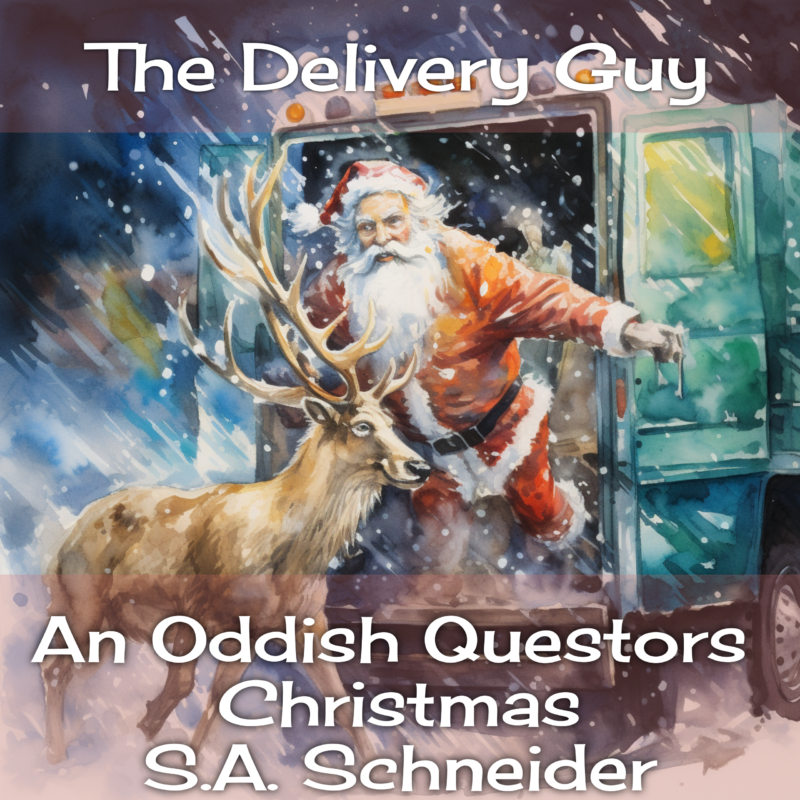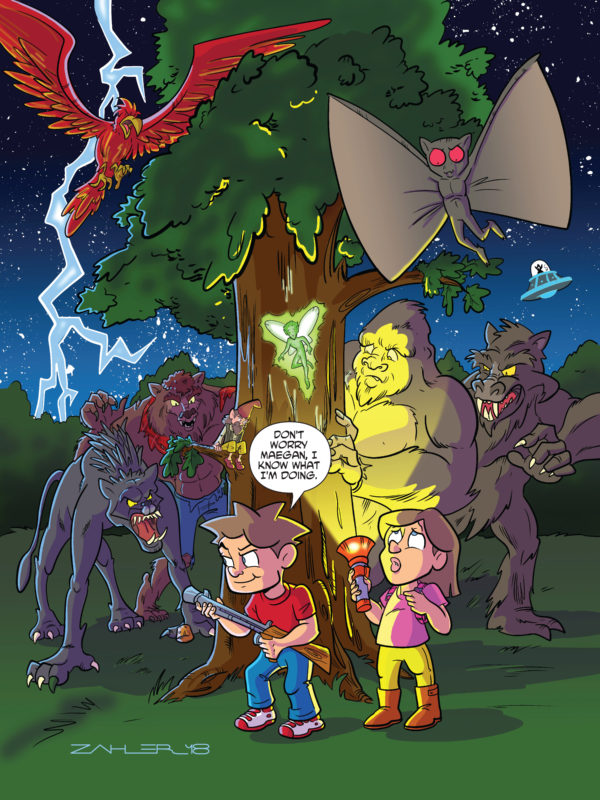Creating the Story
Even though a CYOA story can have many paths and wind all over the place, starting with a complete story can help students wrap their head around how to do this without getting overwhelmed. As probably happened in the earlier exercise, it is very easy to get out of control and create too many branches. The story can get unwieldy and have too many parts to track.
Here are two ways to get started with a CYOA story. Both have their merits and you may find one works better for you than the other. They each involve different types of skills and have benefits to knowing both.
The Elevator Pitch
To start, your story needs defined. This is like any story you write. The same thing happens first with a video game. We think of the basis for the story, the protagonist, and the setting.
What makes this exercise great is that in a CYOA and in video games, the protagonist is the player. So you’re thinking of what the player’s avatar is. You can’t think of the protagonist as brave or funny or anything like that because the player is the one that defines that. This is more true in video games than CYOA, but it’s good practice.
To use my Custom GPT to help you create a logline which you can use too help define your story: Logline GPT
The Basics
Once you have the basic idea for the story, you think of major points of the story.
For example – I want to write a story where the player is searching for a sword. It is a magical sword that will allow them to defeat the goblins that have overrun their village.
If you get the basic design documents at the bottom of this post, you can use those with your kids to get this down on paper. Design documents are used in the video game industry to keep everyone on track with what the end result will be. It wouldn’t be good if the game designers are thinking a forest is a pine forest, but the narrative designers are thinking hardwood tree forest. Worse, would be if the artists and level designers were thinking that the setting would be great if it was an Amazon type jungle.
It’s important that the game details are outlined in the design document, even if it’s not all used for your CYOA story.
That’s enough to get started with the methods below.
Method #1 – The Short Story
This way of creating a CYOA starts with the story. Have your kids write out a short story. Make sure it has a beginning with a conflict, a middle with various events happening leading to the end with the climax and resolution of the conflict.
Identify the spots in the story that will be in all paths. These will all be important points in the story. The scene when written may not be identical. For example – if the hero needs the key from the chest to open the final dungeon door, we need that in every path. Depending on earlier choices, they may have to fight a skeleton before opening the chest OR the skeleton might not animate because of an earlier choice. So while the chest may be in all storylines, the scene may be different depending on choices.
Then identify places in the story that the user can have a choice and rewrite the story from there with that choice. This is where is may be best to give a brief summary of any scenes with choices by using the notecards mentioned before. You’ll see very quickly how too many choices can make the whole story unwieldy.
After 1 or 2 choices and writing out those scenes with any new choices, make sure the choices lead to that chest so they get the key. Remember, not all choices have to lead to the same story card with the chest. There can be several, but they should all have the key in the chest for the user to get out.
This is also a good way to funnel the choices down to 1 or 2 cards with the chest scene. So even if you had 5 choices with different paths, if they all lead to the same card with the chest, you’ve narrowed down the paths, but the reader has still made their story choices for their own story – which is the point of a choose your own adventure.
Also, not all paths and choices have to keep going and lead to the chest. They might take a wrong turn and get grabbed by a giant Eagle and taken to the nest to become food for the little eaglets. End of story and they never got to the chest.
Method #2 – The Map
Another method is to create the whole map. You don’t worry about the story, you make a map of each location or room. On each card you give a synopsis of what’s in the room. You don’t have choices, this is just a map.
Then you can start writing out the scenes in each room and the choices given to the reader. Because you are using the map, this is sometimes easier because you can more easily picture the different rooms and how choices would lead to other rooms. You can definitely have choices that all happen in one room also.
Keep in mind that choices affect the story world and may be different on different paths. If a reader makes a choice to flood a hallway, you can’t later allow a choice to walk through that hallway. This can become complicated if one choice and path may flood the hallway but a different choice and path wouldn’t flood the hallway.
Research
I would recommend checking out the newer choose your own adventure books. The cool thing is the little choices map on the back of the books. They allow you to read a page and you can see how the choices branch and how that leads to other choices or different endings. It’s good to help understand how this works.
You can order a box set from Amazon (affiliate link):

The Haunted House
For this series, I’m working on a story about a kid and a haunted house. I’m keeping it simple. Here is the laid out map of the first couple choices. I’m using the second method listed above.

Wrap Up
Now we have a good start to the whole story. Work your way through the choices and lay them out like I have above. Don’t get too long or elaborate. The goal is to get experience writing a choose your own adventure NOT to create the best or biggest choose your own adventure. Once you get this one done, THEN you can work on something more. It’s best to get the experience of a complete one before tackling a big project.







